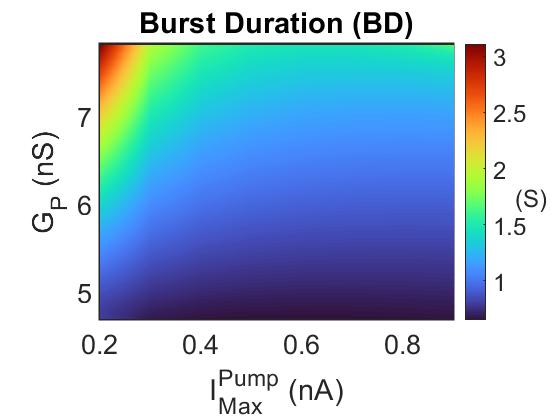Investigation of a Mechanism of Interaction of Persistent Na+ and Na+/K+ Pump Currents Supporting Bursting Activity in a Leech Heart Oscillator Neuron
Central pattern generators (CPGs) are specialized oscillatory neural networks that control rhythmic motor functions in animals. Rhythmic behaviors that are controlled by CPG’s include walking, breathing, and the heartbeat in leeches. Neuromodulators modify CPG rhythms by regulating membrane ionic currents to adjust the organism’s behavior to respond to environmental changes. Neuromodulators frequently co-regulate several distinct ionic currents simultaneously (Marder and Calabrese, 1996; Tobin and Calabrese, 2005; Kueh et al., 2016; Ellington et al., 2021). Why neuromodulators target more than one membrane current is an important question posed by experiments with CPGs. We focus on the interaction of Na+/K+ pump current (IPump) with persistent sodium current (IP) and h-current (Ih). IPump and IP have a complex mechanism of interaction, as IPump and IP create major Na+ efflux and influx respectively. Using the dynamic clamp method on medicinal leech heart interneurons to investigate this interaction, IP and IPump are found to support new mechanism generating bursting with high spike frequency and large amplitude of the envelope underlying bursting activity. In this regime, when dynamically injected conductance of IP is kept constant and the maximal activity of injected IPump is increased, burst duration and inter-burst intervals are observed to shorten.
The mechanism of interaction between these currents can be described by a reduced 2D biophysical model, with the state variables intracellular Na+ concentration and membrane potential. A useful feature of this 2D model is that we can investigate the dynamics of observed phenomena in the phase plane. We used an evolutionary parameter optimization algorithm and biophysical analysis to fit the model to each individual experimental sweep. When the model is fit, a single set of parameters is able to reproduce the bursting characteristics of one entire experimental sweep. The biophysical parameters for other ionic currents such as Ih, slow potassium-current, and leak current are fitted as well to compensate for animal-to-animal variability. We also applied bifurcation analysis and established key transitions between silent and bursting regimes.
 CLOSE SIDEBAR
CLOSE SIDEBAR
